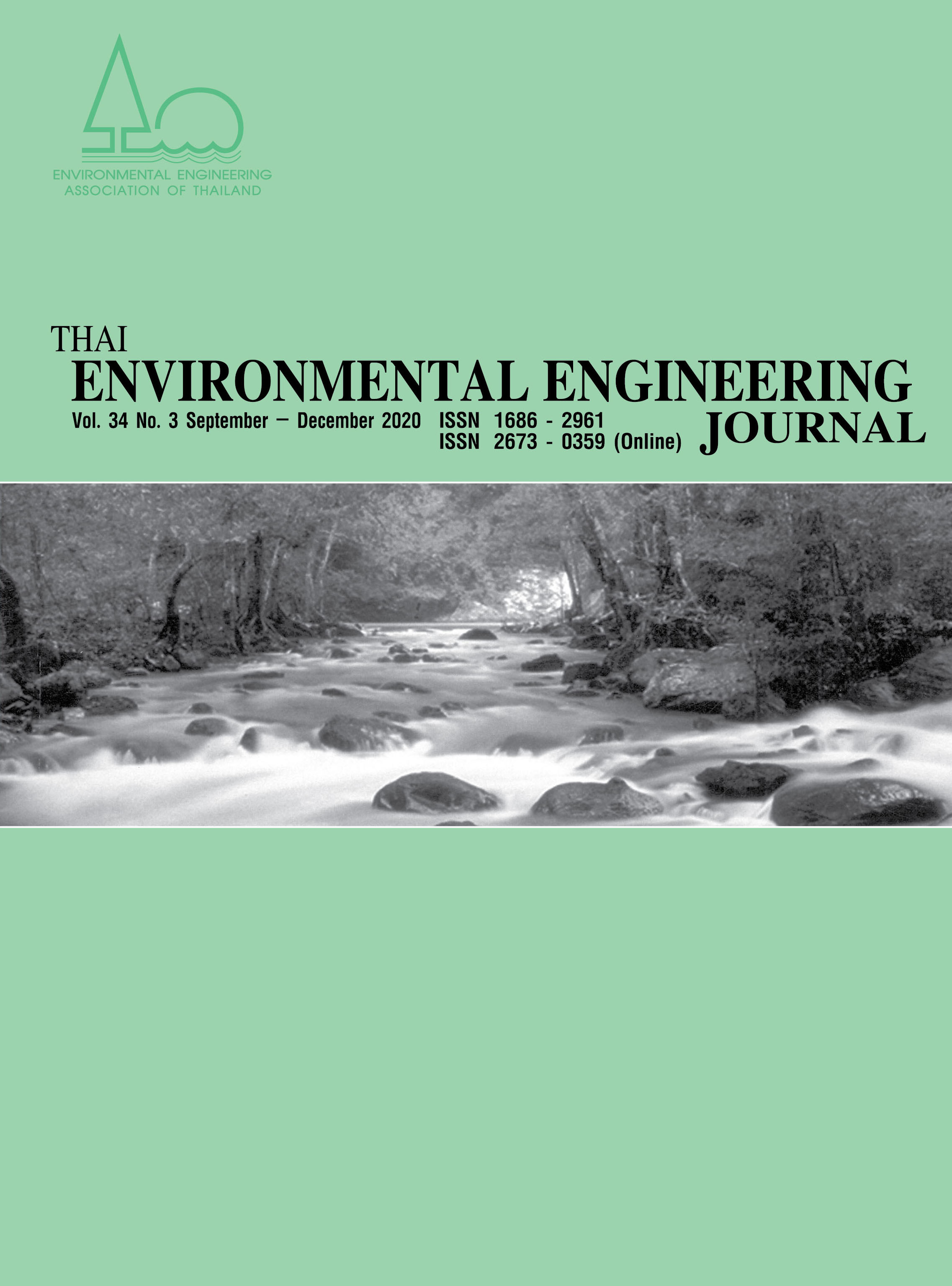Material Flow Analysis of Lead in Lead Acid Batteries Supply Chain Toward Circular Economy
Main Article Content
Abstract
In Thailand, number of cars using conventional Internal Combustion Engine (ICE) is increasing every year. Due to incomplete combustion by the engine, these cars produce PM 2.5 particles which are dangerous to human health. End of Life (EOL) batteries from these cars, if not properly managed, also cause environmental risks. In this study both primary and secondary data are collected and used for MFA analysis of lead in lead acid batteries. It was found that Thailand produced 17,841,371 batteries (equivalent to 245,140 tons of lead per year) in 2018. Some of these batteries were exported to neighboring countries (equivalent to 82,798 tons of lead per year). Some were sold in country for use in industrial factories and for use in vehicles (equivalent to 5,478 tons and 155,269 tons of lead per year, respectively). The total quantity of lead in battery wastes was 160,747 tons per year. The total quantity of lead recycled by 9 legally registered smelters was only 86,900 tons per year. The remaining 73,847 tons of lead in battery wastes were lost from proper recycling system. The management of this portion of battery wastes remains unknown. Proper recycling by legal smelters can reduce the quantity of lead imported from other countries and decreases the demand for natural resources. The researchers propose the following strategies as a guideline for management of lead in vehicle battery industry toward persistent circular economy. They propose that the government should give support to smelters by offering more tax incentive measures and should support the increasing in their productivity. The government should cooperate with battery manufacturers to nominate representative agency governed by governmental officers to buy EOL batteries from both small and big antique shops. The government should liberalize the investment or invest jointly with private sectors in building lead smelters.
Article Details
References
Statistics of Department of Land Transport. 2562. Department of Land Transport. Available from: https://web.dlt.go.th/statistics/.
MP battery. 2562. Lead Acid Batteries. Available from : https://batterymittapap.com/.
Bicanova, K., Wittlingerova, Z., Dvorak, J. and Zimova, M. 2015. The material flows of lead in the Czech Republic. Resources, Conservation and Recycling. 98: 1-8.
Tian, X., Gong, Y., Wu, Y., Agyeiwaa, A. and Zuo, T. 2014. Management of used lead acid battery in China: Secondary lead industry progress, policies and problems. Resources. Conservation and Recycling. 93: 75-84.
Islam, M. and Huda, N. 2019. Material flow analysis (MFA) as a strategic tool in E-waste Management : Applications, trends and future directions. Journal of Environmental Management. 224: 344-361.
Chang, T., You, S., Yu, B. and Yao, K. 2009. A material flow of lithium batteries in Taiwan. Journal of Hazardous Materials. 163: 910-915.
Brunner, P. and Rechberger, H. 2004. Handbook of material flow analysis for environment resource and waste engineers.
Department of Primary Industries and Mines. 2019. Economic Value Assessment in the case of lead Mining Kanchanaburi Province. Available from : http://www.dpim.go.th/articles/article?catid=122&articleid=310.
MTEC. 2018. lead acid batteries., Thailand.
Inthanon, N. Travel of lead in lead acid batteries. 2017. https://www2.mtec.or.th/th/e-magazine/admin/upload/302_56.pdf.
Pollution Control Department. 2560. Waste and Hazardous Substances Management., Thailand.


